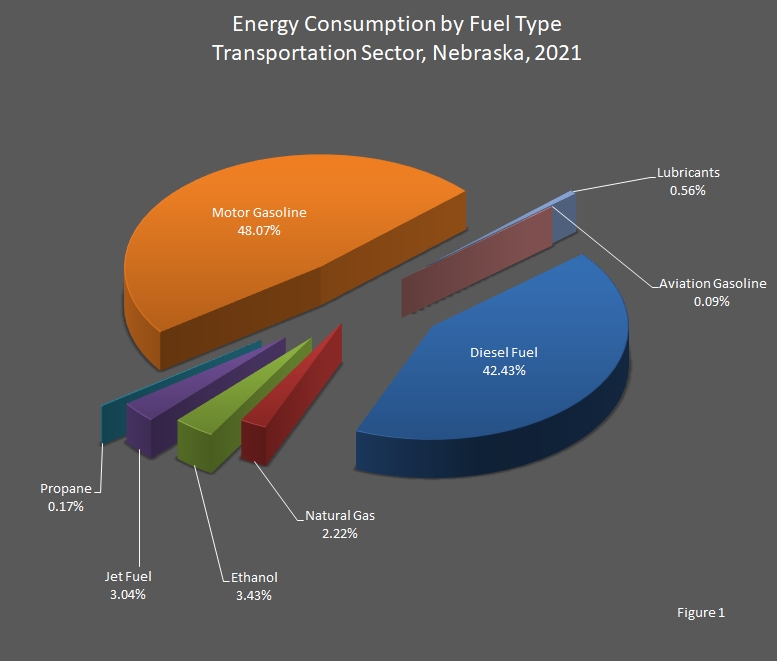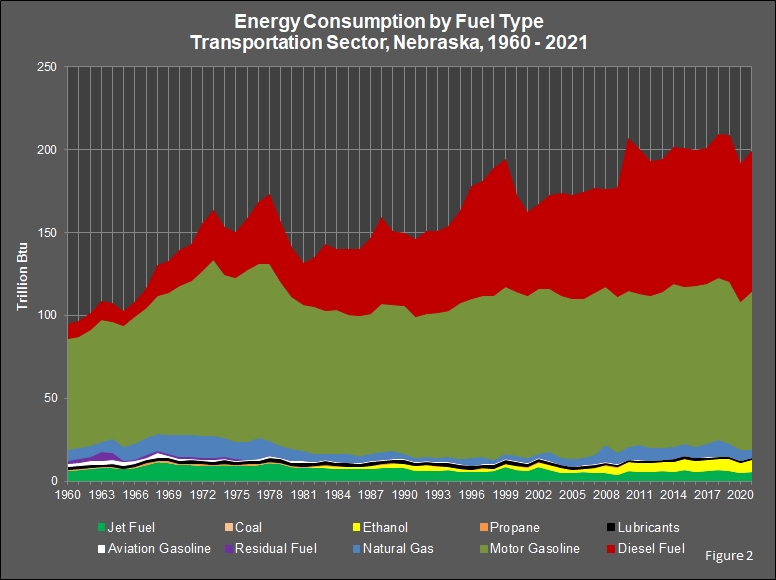The transportation sector consists of private and public vehicles that move people and commodities. Included are automobiles, trucks, buses, motorcycles, railroads, aircraft, ships, barges, and natural gas pipelines. Natural gas use reflects the fuel needed to move natural gas through a pipeline to end users in the residential, commercial, industrial, and electric power sectors. Since 1990, natural gas consumption also includes natural gas consumed as vehicle fuel.
Between 2020 and 2021, transportation sector energy use increased 4.8 percent to 200.4 trillion British thermal units (Btu). Renewable energy use increased 8.2 percent, and petroleum use increased 5.4 percent from 2020. (Renewable energy consisted of ethanol.) Natural gas use decreased 34.2 percent. If there was any consumption of coal, electricity, or residual fuel in 2021, the amounts were so small that the numbers rounded to zero in this table.
In 2021, nearly all of the transportation sector energy needs were met by petroleum products (94 percent). Ethanol met 3.4 percent, and natural gas met 2.2 percent of the energy consumed in the transportation sector.
Motor gasoline (51 percent), diesel fuel (45 percent), and jet fuel (3.2 percent) made up the majority of the petroleum products consumed by the transportation sector; each of the rest of the petroleum products comprised 1 percent or less of total petroleum products.

